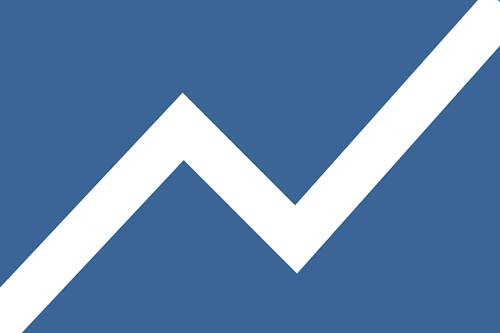Why the Export-Import Bank Should be Reauthorized

The Export-Import Bank of the United States serves as the “lender of last resort” for American exporters, helping to support billions in U.S. exports that create or sustain good jobs for American workers, all at no cost to the American taxpayer. But the Bank may have to stop lending activity at the end of September because some free market purists are seeking to close down the Bank or seriously hamstring its operations. This memo answers a number of key questions about the Ex-Im Bank and its impact on American exports, economic growth, and employment.
What is the Ex-Im Bank and what does it do?
The Export-Import Bank is a federally chartered, independent agency that has enjoyed broad bipartisan support since its establishment in 1934. The Bank provides loans, loan guarantees, and insurance to facilitate the export of U.S. goods and services and supports American jobs. Ex-Im Bank export financing helps American exporters and their workers compete with foreign-backed competitors in highly competitive international markets.
Why is the Ex-Im Bank needed?
Over 90% of U.S. exports are privately financed. But, in some cases, private lenders are unable or unwilling to take on certain credit or country risks in export trade, such as the risks involved in countries that have weaker economic and political systems or where commercial lenders have less of a track record. In these cases, the Ex-Im Bank fills in the gaps in U.S. trade financing by providing competitive loans, loan guarantees, or insurance to recipients that are good credit risks based on a strict risk assessment methodology. And when countries like China or others with their own higher-funded export credit agencies use predatory trade financing to try to grab business from American exporters, the Ex-Im Bank can also “level the playing field” on trade financing so that sales are based on America’s competitive products rather than on concessionary loan rates.
What’s the Ex-Im Bank’s track record?
Since 2007, the Ex-Im Bank has supported $230 billion in U.S. exports across 7,230 American exporters.1 In 2013 alone, it financed over $37 billion in U.S. exports, supporting some 205,000 American jobs.2 Over its 80-year history, the Bank has consistently had a default rate of less than 2%3 and it actually reduces the federal deficit by returning money back to the U.S. Treasury based on the fees it charges. Most recently it returned $1.1 billion to the federal government after covering its expenses in 2012 and 2013.4
Who does the Ex-Im Bank help?
Ex-Im supports exports by both large and small U.S. firms. Although most of the Banks’ financing covers exports by leading U.S. exporters like Boeing, Caterpillar, and GE, almost 90% of the Banks’s transactions are with small and medium-sized firms.5 And Ex-Im Bank financing assistance to larger exporters also supports many other small U.S. businesses that make up the extensive supply chains of larger firms.
What’s the Ex-Im Bank’s status?
The Ex-Im Bank’s authorization will expire on September 30, 2014, meaning that no new loans would be issued after that date. The Ex-Im Bank has asked Congress to increase its lending cap from $140 billion to $160 billion in its reauthorization request. While there is currently a push to reauthorize the Bank prior to September, House Financial Services Chairman Jeb Henserling, an Ex-Im Bank opponent, claims that he plans to hold hearings over the summer about the Bank’s fate.
What do the Bank’s critics say?
Critics want to shut down the Bank’s operations, claiming that its loan guarantees put taxpayers at risk, like Fannie Mae and Freddie Mac. But, unlike toxic mortgages, Ex-Im’s loans are supported by the collateral of real goods—like aircraft and capital equipment—for which there are well-established international prices. And the Bank’s consistently low default rate—which was a mere 0.237% in the 4th quarter of 2013, is well below the default rate for private banks.6
Free market purists also charge that the Bank unfairly picks “winners and losers” in export trade. But eliminating Ex-Im financing would amount to unilateral U.S. disarmament in an already heated battle for global exports. Many of America’s major competitors already provide significantly higher levels of export financing than the United States as a share of their GDP. Korea, for example, provides 10 times more, while Indian and Chinese financing is, respectively, three and two-and-one-half times higher.7 And, without Ex-Im financing, foreign exporters and their workers would be in an even better position to beat out U.S. producers for export business.
How can Ex-Im contribute to U.S. economic growth and jobs?
Of the world’s 12 largest economies, the United States is last in the share that exports contribute to our GDP. This means America still has significant room to use increased exports to drive economic growth and create good American jobs. A long term reauthorization of the Ex-Im Bank and a significant increase in its loan cap will help assure that the American economy and America’s producers and workers can remain “winners” in global trade.
Endnotes
United States, Export-Import Bank of the United States, “Export Data-USA,†2007-2014. Accessed May 13, 2014. Available at: http://www.exim.gov/customcf/congressionalmap/us_map.cfm.
Â
Edward Gerwin, Jr., “Save the Ex-Im Bank,†Blog, Republic 3.0. Accessed May 13, 2014. Available at: http://republic3-0.com/ed-gerwin-save-ex-im-bank.
Â
United States, Export-Import Bank of the United States, “Facts about Ex-Im Bank.†Accessed May 13, 2014. Available at: http://www.exim.gov/newsandevents/upload/The_Facts_About_Ex-Im-20Bank20120814-1.pdf.
Â
Myron Brilliant, “Unilateral disarmament in trade?†Op-ed, The Hill, April 24, 2014. Accessed May 13, 2014. Available at: http://thehill.com/blogs/congress-blog/economy-budget/204313-unilateral-disarmament-in-trade#ixzz2zq1djMIB.
Â
United States, Export-Import Bank of the United States, “FY 2013 Highlights.†Accessed May 13, 2014. Available at: http://www.exim.gov/about/library/reports/annualreports/2013/highlights.html.
Â
United States, Export-Import Bank of the United States, “FY 2013 Highlights.†Accessed May 13, 2014. Available at: http://www.exim.gov/about/library/reports/annualreports/2013/highlights.html.
Â
Stephen Ezell, “Top Competitors Continue to Outinvest the United States in Export Credit Financing,†Blog, The Innovation Files. Accessed May 13, 2014. Available at: http://www.innovationfiles.org/top-competitors-continue-to-outinvest-the-united-states-in-export-credit-financing/.
Â
Subscribe
Get updates whenever new content is added. We'll never share your email with anyone.

